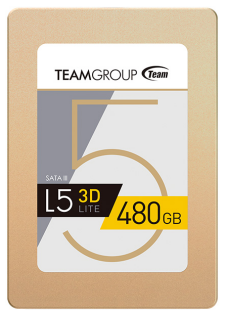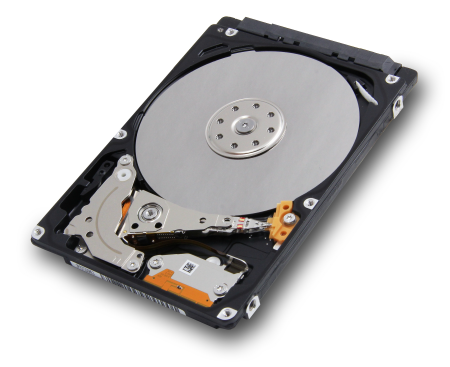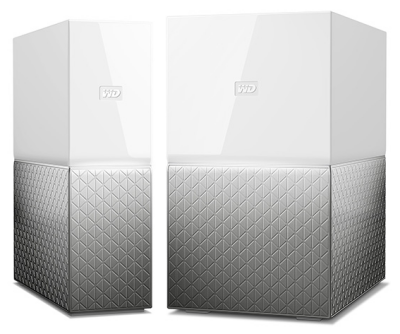- Details
- Flash Memory
 ADATA Technology, a leading manufacturer of high performance DRAM modules and NAND Flash products, today launched industrial-grade ISDD336 SD cards and IUDD336 microSD cards. Diversifying ADATA offerings for industrial storage, all models feature wide temperature tolerance as well as shock, vibration, and humidity resistance well beyond consumer product ratings. ISDD336 and IUDD336 cards utilize durable and long-lasting 3D MLC NAND Flash, and are fully compliant with SD 3.0/SPI specifications, making them reliable choices for embedded systems. Performance across the board reaches 95MB/s read and 90MB/s write. Customers can choose ISDD336 SD cards in 16GB to 256GB capacities, and IUDD336 microSD cards in 16GB to 128GB capacities.
ADATA Technology, a leading manufacturer of high performance DRAM modules and NAND Flash products, today launched industrial-grade ISDD336 SD cards and IUDD336 microSD cards. Diversifying ADATA offerings for industrial storage, all models feature wide temperature tolerance as well as shock, vibration, and humidity resistance well beyond consumer product ratings. ISDD336 and IUDD336 cards utilize durable and long-lasting 3D MLC NAND Flash, and are fully compliant with SD 3.0/SPI specifications, making them reliable choices for embedded systems. Performance across the board reaches 95MB/s read and 90MB/s write. Customers can choose ISDD336 SD cards in 16GB to 256GB capacities, and IUDD336 microSD cards in 16GB to 128GB capacities.
Tough storage with more options
ADATA continues to increase its focus on industrial-grade products, with more offerings for users. As the SD standard has clear advantages for industrial customers thanks to its compact form factor, durability, and low power requirements, ADATA strives to provide more choice in the SD space. Thus, ISDD336 cards arrive in SD form factor while IUDD336 cards deliver the same quality and performance in microSD.
- Details
- Flash Memory
 Targeting consumer’s growing demand for computer storage capacity and higher performance, the world’s leading memory brand, Team Group today announces the launch of the solid state drive L5 LITE-3D with all new 3D NAND technology. The latest generation of 3D NAND flash memory has overcome the technical barrier of 2D NAND. With features of durability and low energy consumption, it has gradually become the mainstream memory of the latest generation and enhances the overall capacity of the solid state drive, the performance, and the reliability. It not only provides a better performance and endurance but also breaks through the technical and capacity limitations of planar chips.
Targeting consumer’s growing demand for computer storage capacity and higher performance, the world’s leading memory brand, Team Group today announces the launch of the solid state drive L5 LITE-3D with all new 3D NAND technology. The latest generation of 3D NAND flash memory has overcome the technical barrier of 2D NAND. With features of durability and low energy consumption, it has gradually become the mainstream memory of the latest generation and enhances the overall capacity of the solid state drive, the performance, and the reliability. It not only provides a better performance and endurance but also breaks through the technical and capacity limitations of planar chips.
The L5 LITE-3D solid state drive is 4 times faster than the traditional hard drive. Its excellent performance and read/write speed not only allow fast boot/shutdown time but also speed up the response time of all application, so consumers can enjoy the high-speed performance immediately after the upgrade. It is lightweight and has an industry-standard 2.5-inch. With only 7mm in height, it is best suited for Ultrabooks on the market. Whether it is for laptop or desktop, the upgrade can be done quickly. It is using SATA III 6Gbps specification and capacities available in 120GB, 240GB, 480GB, etc. The read speed performance is above 470 MB/s*, which not only easily improves the computer performance, but it is also the best bargain available.
- Details
- Hard Disks
 Western Digital Corporation, a global data storage technology and solutions leader, has expanded its WD Gold® hard drive lineup to include a 12TB capacity model, designed to address demanding Big Data workloads. The new high-capacity hard drives provide for increased storage density in a range of enterprise and cloud storage applications.
Western Digital Corporation, a global data storage technology and solutions leader, has expanded its WD Gold® hard drive lineup to include a 12TB capacity model, designed to address demanding Big Data workloads. The new high-capacity hard drives provide for increased storage density in a range of enterprise and cloud storage applications.
Whether data comes in the form of confidential consumer data, healthcare records or business intelligence, WD Gold hard drives provide a no-compromise storage solution that modern day IT managers need.
“As data growth continues unabated, retaining more of that data and generating meaningful insight from it becomes increasingly important,” said Brendan Collins, vice president, Devices business unit, Western Digital. “Businesses that most effectively extract value from operational data are able to make smarter decisions, improve business outcomes and ultimately gain a competitive advantage.”
The WD Gold hard drives are designed to store users’ most precious data. Designed for heavy-workload, high-vibration server environments, the new drives have a reliability rating (2.5 million hours MTBF) that is among the highest in WD’s hard drive portfolio. The drives utilize Western Digital’s 4th generation HelioSeal technology, which seals helium in the drive to help provide exceptional capacity, reliability and power efficiency.
0 Comments- Details
- Hard Disks
Toshiba America Electronic Components, Inc. (TAEC), a committed technology leader, today announces its new MQ04 Series 1TB HDD, which is compatible with notebook PCs, game systems, all-in-one slim-line desktop systems, set-top box appliances, and other applications requiring high capacity and durability storage.

The MQ04 Series single-disk model delivers 1TB of data storage capacity in an ultra-compact 2.5-inch, 7mm height form factor. The drive’s 6 Gbit/s SATA interface and 5,400 rotational speed combined with a large 128MiB buffer and consistent seek performance, result in a 34 percent higher internal transfer rate performance when compared to the previous 1TB MQ01 Series models. The new model is also quieter and weighs less than prior generations.
0 Comments- Details
- Network Storage
Western Digital Corporation, a global data storage technology and solutions leader, today launched My Cloud Home, a new personal cloud storage solution that empowers consumers to take control of their often-scattered digital content. With the My Cloud Home solution, consumers can easily aggregate all of their photos, videos and files from their smart phones, computers, USB storage, cloud and social media accounts in one central place. Using their smart phone, tablet or computer from anywhere with an internet connection, consumers then are free to experience and share that content with family and friends.

With their data spread across 14 different devices on average, consumers are faced with growing, disparate collections of data and no way to easily access it all. Those collections are expanding to an approximately 4.5TB of data per U.S. household in 2017 and are expected to grow further with increasing popularity of capacity-intensive applications such as virtual reality, 4K, 8K and 360 video.
0 Comments- Details
- Flash Memory
Longsys, a world leader in consumer flash storage, today announced that it has acquired the Lexar trademark and branding rights from Micron Technology, Inc. The Lexar brand has long been recognized as a leading brand for high-performance, high-reliability removable storage solutions for a wide variety of applications, such as the professional photography market. This acquisition provides assurance to existing Lexar customers that the solutions and support they have come to expect from Lexar branded products will continue to be available. Additionally, the market reach and product breadth provided by Longsys promises to expand the Lexar customer experience into new market segments and geographies.

"We are very honored to acquire the Lexar brand," said Huabo Cai, CEO of Longsys Electronics Limited. "Lexar has built a great brand name and our vision is to make it even greater. Existing customers can rest assured that the innovative solutions and excellent support that they have experienced from Lexar will continue. The mission to make Lexar the go-to brand for high-performance removable storage continues, and we will expand upon it to offer even more compelling solutions as the age of wireless and big-data impact the consumer storage markets."
0 Comments- Details
- Flash Memory
 ADATA Technology, a leading manufacturer of high performance DRAM modules, NAND Flash products, and mobile accessories today confirmed that its Premier microSDXC/microSDHC UHS-I Class 10 cards now support the new SD Association A1 standard. Part of SD 5.1 specifications, A1 has been designed for running apps off external storage, going beyond traditional SD card uses such as accessing photos and video. At the same time, ADATA has also implemented V10 and V30 video recording capabilities on all of its Premier Pro microSD and SD cards, denoting at least 10MB/s and 30MB/s of video recording bandwidth, respectively.
ADATA Technology, a leading manufacturer of high performance DRAM modules, NAND Flash products, and mobile accessories today confirmed that its Premier microSDXC/microSDHC UHS-I Class 10 cards now support the new SD Association A1 standard. Part of SD 5.1 specifications, A1 has been designed for running apps off external storage, going beyond traditional SD card uses such as accessing photos and video. At the same time, ADATA has also implemented V10 and V30 video recording capabilities on all of its Premier Pro microSD and SD cards, denoting at least 10MB/s and 30MB/s of video recording bandwidth, respectively.
SD cards now able to run apps just like internal storage
An evolution long promoted by the SD Association, the A1 specification is part of SD 5.1 requirements. It shows that a microSD or SD card can support sufficiently high read speeds and IOPS counts to successfully run most apps without latency being an issue. In other words, A1 certified microSD and SD cards equal internal storage for app performance. They give users much greater freedom, as before apps were limited to internal storage even if large external storage was installed. With A1 and future specifications, users have the ability to install many more apps than would normally be the case, thanks to large add-in storage that is able to run said apps without compromise.
- Details
- Flash Memory
 Western Digital Corporation, a global data storage technology and solutions leader, today announced its 400GB SanDisk Ultra microSDXC UHS-I card, the world’s highest-capacity microSD card for use in mobile devices. Two years after introducing its record-breaking 200GB SanDisk Ultra microSDXC card, Western Digital has doubled the capacity within the same tiny form factor. Keeping up with the demands of today’s mobile-centric lifestyle, the new SanDisk microSD card provides consumers with the freedom to capture, save and share photos, videos and apps, and enjoy offline content - all without worrying about storage limitations.
Western Digital Corporation, a global data storage technology and solutions leader, today announced its 400GB SanDisk Ultra microSDXC UHS-I card, the world’s highest-capacity microSD card for use in mobile devices. Two years after introducing its record-breaking 200GB SanDisk Ultra microSDXC card, Western Digital has doubled the capacity within the same tiny form factor. Keeping up with the demands of today’s mobile-centric lifestyle, the new SanDisk microSD card provides consumers with the freedom to capture, save and share photos, videos and apps, and enjoy offline content - all without worrying about storage limitations.
“Mobile devices have become the epicenter of our lives, and consumers are now accustomed to using their smartphones for anything from entertainment to business. We are collecting and sharing massive amounts of data on smartphones, drones, tablets, PCs, laptops and more. We anticipate that storage needs will only continue to grow as people continue to expect more sophisticated features on their devices and desire higher quality content,” Jeff Janukowicz, research vice president, IDC. “We estimate mobile device users worldwide will install over 150 billion applications alone this year, which require a ton of memory on all of our favorite devices.”
0 Comments- Details
- Flash Memory
 ATP, the leading manufacturer of rugged SSDs and DRAM modules for the industrial markets, debuts its first NVMe based M.2 2280 SSD offering twice the performance of SATA-based SSDs. This newest generation SSD is designed to meet the storage demand of I/O intensive data processing and low latency requirement for industrial and mission critical applications, including surveillance, medical imaging, and many network- storage systems with fast caching requirement.
ATP, the leading manufacturer of rugged SSDs and DRAM modules for the industrial markets, debuts its first NVMe based M.2 2280 SSD offering twice the performance of SATA-based SSDs. This newest generation SSD is designed to meet the storage demand of I/O intensive data processing and low latency requirement for industrial and mission critical applications, including surveillance, medical imaging, and many network- storage systems with fast caching requirement.
By adopting NVMe Rev.1.2 specifications and integrating the latest 3D NAND MLC technology, ATP’s M.2 2280 NVMe SSD is constructed via a PCIe Gen 3x4 bus interface offering from 128GB up to 1TB of memory capacity to boost its performance to exceed the previous bottleneck of AHCI standards, delivering Sequential Read up to 1,260 MB/s and Sequential Write up to 980 MB/s.
While other memory suppliers emphasize on configuring the performance attributes of an NVMe SSD, ATP takes a step further instead in carefully considering all aspects of enhancing memory longevity and reliability for mission critical environments.This includes careful selection of BOM planning with key suppliers, and adding wide temperature and extreme power cycling testing. Heat dissipation is another major issue commonly encountered for NVMe drives. Through temperature feedback and optimized thermal throttling mechanism, ATP’s NVMe SSD avoids drastic performance drop or possible damage to controller caused by overheating.
0 Comments- Details
- Flash Memory
Crucial, a leading global brand of memory and storage upgrades, today announced the availability of a new offering in its solid state drive product portfolio: BX300. It combines Micron 3D NAND with a value-conscious design to deliver the features DIY upgraders and builders are looking for. The new SSD includes 3D MLC NAND in a 2.5-inch form factor drive, is available in 120GB, 240GB, and 480GB capacities.

Upgrading from a traditional hard drive to a solid state drive has never been easier. The Crucial Advisor tool helps users determine a compatible upgrade based on their system’s manufacturer, make, and model. Supporting the BX300 is Crucial’s mobile-friendly install guide so users of all technical ability levels are armed with the straightforward, step-by-step information they need to successfully install an SSD. Data migration is also simplified with free access to Acronis True Image™ HD software.
0 Comments
